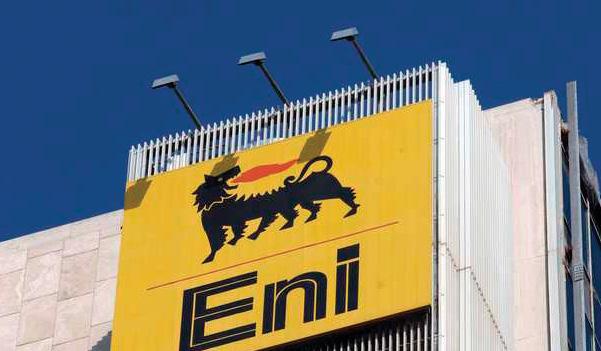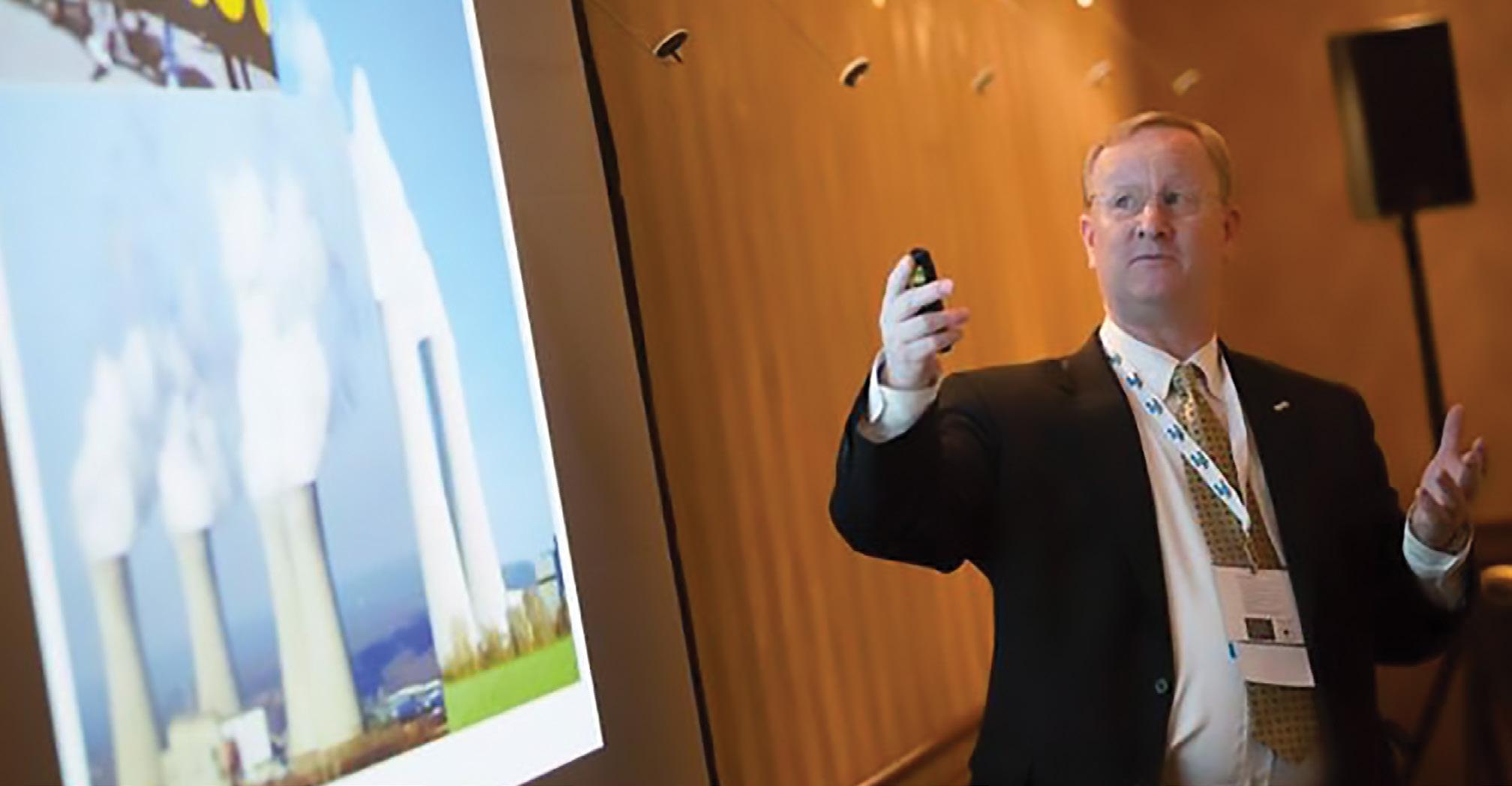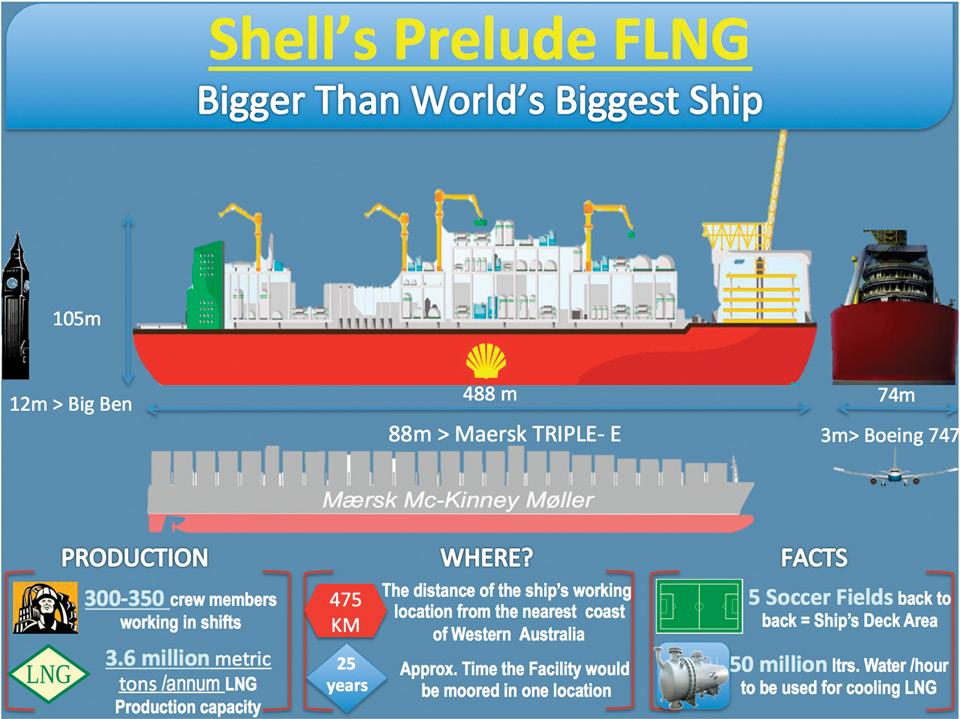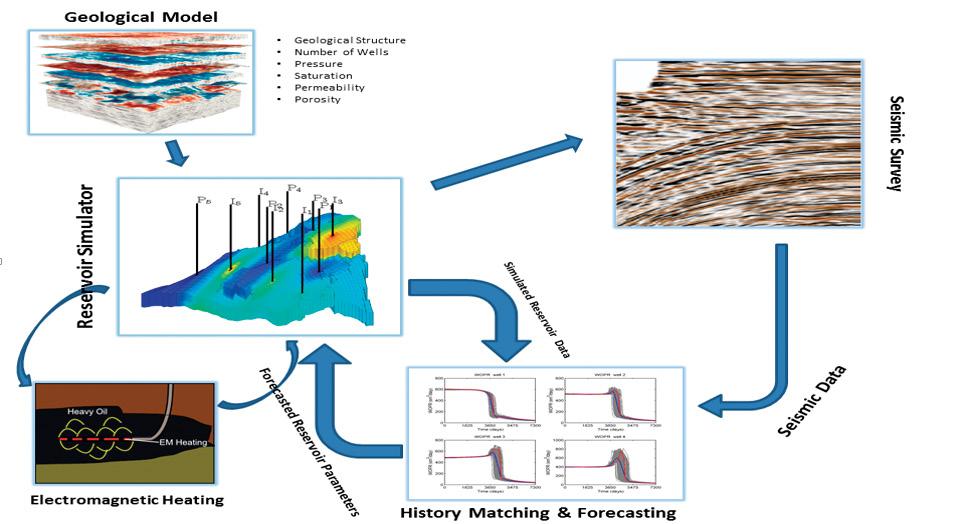INDUSTRY THRESHOLD
Improving Reservoir History Matching of EM Heated Heavy Oil Reservoirs via Cross-Well Seismic Tomography
Klemens Katterbauer Research Assisstant, King Abdullah University of Science and Technology (KAUST)
Most of the world’s largest reserves are composed of different viscous oil types and found in many environments across the globe and extracting these resources is of substantial interest for the industry. Increasing recovery rates from existing oil reservoirs by extracting viscous components is a key challenge for the oil and gas industry. One method for recovery is the Electromagnetic (EM) heating via high frequency EM radiation. It is the process of applying a high-frequency electrical field to the reservoir formation, causing the molecules of the fluids and rocks to vibrate, thus leading to an internal generation of heat. The generated heat leads then to an increase in temperature of the oil-bearing formation, resulting in a reduction of viscosity. It further enables a more uniform heating of the medium, allowing the targeting and heating of certain parts of the reservoir using directional antennas. It has attracted attention due to its wide applicability in different environments, efficiency, and improved controllability of the heating process. EM heating has been conducted for real reservoir studies in Russia, and the United States. Bridges et al. conducted field tests of tar sand heating at Asphalt Ridge, Utah, USA, showing that the temperature could be raised to more than 473 K with recovery rates being around 30-35 % after only 20 days. It was expected that the continuation of heating would have further increased recovery rates with minimal power losses experienced. While there have been extensive laboratory and field studies on the effects of EM heating on oil reservoirs, relatively limited researches have been done for understanding and modeling the effects of EM heating on reservoir history matching and forecasting. Changing reservoir fluid properties by heating effects may significantly alter reservoir structure and saturation, leading to increased uncertainty in production forecasts and estimation of reservoir properties. Since the industry works on improving formation knowledge, accurate tracking of oil reservoirs, optimizing production, and reservoir imaging techniques have attracted extensive research efforts, especially Crosswell imaging techniques. Crosswell seismic imaging operates by placing a source (acoustic wave source) and receiver in different wells. The source emits acoustic waves that propagate through the rock formation, which are then detected by the receiver. A change in the fluid content and fluid distribution leads to a change in arrival times and amplitude changes. Despite the significant advances in seismic technologies, a major problem faced with seismic waves is the poor distinguishability between hydrocarbons and injected water. We have developed a history matching framework for EM heated heavy oil reservoirs incorporating seismic data attribute responses for improved reservoir forecasting via an Ensemble Kalman Filter (EnKF). The framework is capable of handling the arbitrary heterogeneity and ex6
ECHO February 2015
tensive simulations for a variety of different heating levels, exhibiting enhanced forecastability and reduced uncertainties. The framework of the EM heated reservoir model incorporating seismic is illustrated in Figure 1. Upon specifying the geological model, the parameters are forwarded to the reservoir simulator that interfaces directly with an EM heating module. The reservoir states and parameters are then transferred to the seismic module, followed by a history matching update step. The updated status and parameters are then returned back to the reservoir simulator, and then stepped forward in time. In order to determine EM heating, we assume an installation of an array of microwave antenna heating modules that uniformly heat the reservoir. Given the power emitted from the heating modules, we use the thermodynamical relationship based on Fourier’s Law, given by: Cvh ∆T= ∆Q, (1) Where Cvh is the volumetric heat capacity, ∆T is the temperature difference, and ∆Q is the amount of heat transferred from the heat source. The volumetric heat capacity is computed as the harmonic average of the oil and water phase subjected to water saturation. After obtaining the temperature of the heated formation, the viscosity of the water and oil phase can then be computed using Andrade’s relationship: μα= Aα eBα/T, (2) Where μα is the viscosity of the phase α (α=o,w), T is the temperature of the formation, and Aα,Bα are parameters estimated using a regression analysis given the data. A study was conducted on a reservoir 2 km in length and width, and around 25 m in Z direction, and represents a Cenozoic sedimentary rock reservoir structure found in the Arabian Peninsula. The rock structure is assumed to be consisted of sandstone with porosity and permeability






